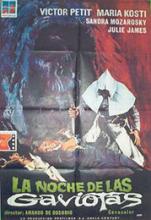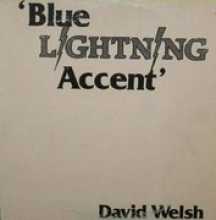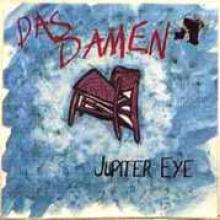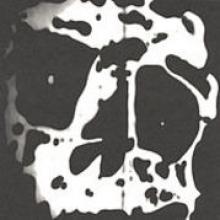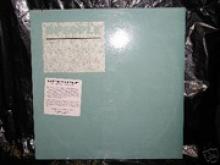Mushroom - "Singing a Song in the Morning" (Video)
Dead Luke: He's Not Dead and I Don't Know if His Name's Luke, but He Plays Psych
Might as well put this out there: wouldn’t have checked this disc out if not for that cover art. I mean, it’s kinda fantastical in a cut rate, wanna be tripped out manner. Good to take in after psychedelics, I’d imagine.
Anyway, by way of the Dead Hookers, Dead Luke turns in another album full of the conflagration of pop, folk, psych and whatever other genres are properly inculcating the underground at this point. To levy the term ‘outsider’ on anything at this point, and specifically a musician whose had work released by Sacred Bones amongst other imprints, doesn’t fly. It’s the same as everything being lo-fi for the last few years. If you get to record with any semblance of real equipment, manipulate it to sound all distant, that’s proper production, not low fidelity.
Anyway, the Wisconsinite found a home for his first solo long player in Florida’s Dying, which has been getting more and more notice of late after having issued the Electric Bunnies album last year as well as a compilation including the Bay Area’s Nobunny. A common thread? Probably not. And neither of those ensembles has anything to do with what’s going on over the course of Dead Luke’s American Haircut.
No matter the company this disc finds itself, there’s bound to be an indie-hippie (is that a thing? It is now) over tracks like “Sunrise,” which judging from its tone has more to do with the apocalypse than a new day dawning. It’s all fed back guitar sounds with a hint of sitar and enough ambient noise accompanied by background moaning to make the track a proper accompaniment to your next out door acid festival.
There’s almost a wide ranging attitude towards whatever underground rock stuffs constitute at this point. Moving from that previously mentioned, noise excursion, the following track apes a jangly, three chord rave up that should sate fans of Columbus Discount as well as Important Records.
It isn’t hard to imagine a few months on Dead Luke working the country with a cobbled together band opening up for whoever constitutes the spaced out rock cognoscenti at this point. It’ll be interesting to what his sound evolve if and when a move like that becomes a necessity. It didn’t work too well for Wavves, but people still eat that garbage up. And while any number of criticisms might be levied against Luke, being trash isn’t one of ‘em.
A De Ossorio Horror: Night of the Seagulls (1975)
First off, I’d like to note that it took me almost a year to wade through Amando de Ossorio’s Blind Dead movies. Why? Well, they’re kinda boring.
What’s interesting about the series, though, is the fact that the disparate films don’t have any connection to one another apart from the appearance of the slow moving Templars. Yeah, there’s ritual killing and all its trappings in each of these efforts, but no recurring characters, no references to earlier plots. Nothing. Of course, seeing as the films were all released within five years might have meant the filmmakers didn’t have too much time to belabor a proper narrative development.
Whatever the case, Night of the Seagulls gets to the nitty gritty, as it were, much more quickly than de Ossorio’s earlier efforts. In fact, the film begins with the Templars dispatching some denuded town’s women. And while that most likely was meant to grab viewer’s attention – and it does – revealing the Templars, even if its in flashback form and they’re not yet ghouls, so early on seems odd.
There’s some theater adage about showing a gun in scene one necessitating it to go off not to soon thereafter. Applying that to Night of the Seagulls, there’s a problem, since the opening scenes of the film find that gun going off, so to speak. Where to go after that?
Enter a new doctor and his sometimes skittish wife.
The pair arrives in the God-foresaken water front town to replace a doctor who’s clearly ready to leave. His swift exit doesn’t lend viewers too good of a reason. But after watching is replacement attempt to coax directions out of a town’s person, it makes a bit of sense.
Either way, the tension between the locales and the new settlers is basically the only major sub-plot within the film. The most amusing reference to the chasm comes when the doctor’s wife attempts to make a purchase at the dry goods store. She’s passed over by the clerk after waiting in line, which prompts an excoriating speech on manners. The irony of that probably lost on the script writers.
Regardless of the paper thin plot – pervasive in this type of film – Night of the Seagulls should surely sate any number of horror movie aficionados and Templars’ fans. Figuring a best film from the series, though, seems a bit daffy. That’d probably just be like a ‘best of the worst’ award.
David Welsh: More Dug Up Psych Nonesense from the Midwest
David Welsh, who now apparently goes by Jimi Paulix, issued a disc thirty years ago without including a song that anyone would be able to sing along to. It’s not that there wasn’t a tunefulness to some of the work on Blue Lightning Accent, but his vocals are more concerned with being around the right note than being on it. Of course, his guitar playing might make up for any of that perceived tone-deafness. But only sometimes.
As Paulix, there’s apparently a new album that’s either been finished or almost there. That’s according to the Numero Group folks. And while it’s not a surprise that the folks behind the imprint are taken with the concept of Welsh’s work, traveling to hear it seems a bit much.
Anyway, the man’s one album, released in 1980, does at points warrant to renewed fawning that it’s been getting of late. It’s penultimate “Blue Morning” is all coffee house blue folk angled at the crowd who might enjoy snapping fingers in lieu of clapping. And while the track ends up being rather difficult to wade through due to Welsh’s caterwauling, his guitar work and the temp changes (at least three) are startlingly well conceived and executed. Granted, some of the guitar stuff is just comprised of easy blues cops, but it works.
Easily the most aggressive and perhaps enduring efforts here is the disc’s title track. As Welsh is joined by a full band, his guitar shifts through chords that only make total sense to him – and maybe even not completely. There’s some free improv backing the song, but more than a few times, the lurching music clearly has its plotted out points. As an instrumental, an electric one at that, “Blue Lightning Accent” is easily tops. The rest of the album and the fact that landing a copy might put a dent in your beer money, though, doesn’t make it all that noteworthy.
Das Damen: When Punk and Rock Don't Mix
It’s confusing as to why folks persist in celebrating group’s like Dinosaur Jr. and the Butthole Surfers. Stripping away the most noisome elements of any song penned by either group, you’re left with nothing other than middle of the road hard rock. Of course, each song has that noisy element. And while an occasional excursion into noise for art’s sake is a laudable endeavor, it’s really not enough to formulate a band around. Yet, even the reconstituted formations of group’s like these continue to pull in new fans and a good deal of loot to boot.
But Dino Jr. and the B Surfers, along with Sonic Youth can’t be said to be too much more than the logical extension to the gains made by the punk crowd during the years just prior to the formation of these groups. What’s interesting, though, is that Thurston Moore’s Ecstatic Peace label, continuing on in varied forms over the last few decades, had a part in issuing a spate of forgettable works during the eighties. Just like SST, this latter imprint, perhaps, fairing a bit better.
Either way, one of the culprits disseminating rock music somewhere between punk and plain rock stuffs was Das Damen. Yeah, in German in means the women, apparently. With its sound coming somewhere between all the aforementioned bands and whatever would soon become the norm in Seattle, the band issued a good number of discs during the eighties. Something like five long players were released in that time. But the tandem of Jupiter Eye and its follow up Triskaidekaphobe are generally considered the group’s crowning achievements. There might be a note worthy tune or two on each, but really, those efforts wind up sounding like people waiting for Pear Jam’s noisier cousin – or Saccharine Trust to write a pop song.
There’s noting god awful about Jupiter Eye, apart from its art work. But spinning out tracks to the five minute mark without any good justification is nothing but overkill and indulgence. The band always had a taste for a bit of psychedelia – its guitar solos are ample proof and frequently pretty interesting to listen to. The instrumental “Quarter After Eight” includes a few of those, but mostly concerns itself with the nexus of melodic Brit punk and a strikingly strong sense of rhythm.
Triskaidekaphobe, generally considered the stronger effort of the two, offers up only inconsistent thrills and doesn’t include anything as engaging as “Quarter After Eight.” So while Das Damen was appreciated by the right people at the right time, it’s inability to write a catchy tune devoid of hard rock cheese relegated it to being another forgotten band that issued work on a few forgotten labels.
Ty Segall & Mikal Cronin - "I Wear Black" (Video)
TWOFR: Thee Snuff Project x Rise Against
Thee Snuff Project
Dyin' Ain't Much of a Livin'
(Hackshop Records, 2004)
If you turned down the volume on your stereo to “1” Thee Snuff Project will still make blood spurt from your ears. Scott Taylor has one mode of singing and it’s called attack. The whole album is just unrelenting. From the guitar drone on the longest intro ever, “Intro To Every Black Window”, to the varied tempos on “Start Your Own Cult” the rage doesn’t let up. I don’t know if these kids were beaten just prior to the recording and this is how they got out the aggression, but this disc doesn’t lack energy. It also doesn’t hoard talent, but it’s a trade off. Pretty much the groove that’s reached amidst the crunch of every track is minimalistic. And while I enjoy everything simple from Kraut Rock to Steven Reich, the reliance on the wah-wah peddle (“A Little Strange”, “Random Deity”) is a little disturbing. Fortunately, the tempo changes on “Next Time I’ll Be A Spider” hints at the practice that theses DC natives have put into their craft. The track sounds like Sabbath listening to The Who while trying to cover a Stooges song. The Stooges connection ain’t done yet either. On “How To Use A Butterfly Knife” there’s a fight between the rhythm section and the guest sax player. Everything about the track is forgettable, but the sax farts on top of the guitar distortion is definitely admirable. Lyrically, “I Contact” presents itself as the most conscious, getting out the lines, “All the kids wanna die for the USA/Let ‘em go, it’s all the same to me.” Thee Snuff Project, when they keep the tracks short, are affective. And even though I don’t think that they’re gonna become millionaires, they should at least make gas and beer/liquor money wherever they go for a decade or so.
Rise Against
The Sufferer and The Witness
(Geffen, 2006)
The label that has given us Nelly Furtado, Enrique Eglasias and Ashley Simpson now graces the masses with the new Rise Against album. Fourth overall for the band and second for a major label, the sound of the band has maintained a basic sense of cohesion over its career. These two latest albums though have one particular aspect that is about as separate from hardcore as any other. Strings. On 2004’s “Siren Song of Counter Culture”, one track utilized these instruments and on their latest release, the song “Roadside” gets the treatment. Probably, the band genuinely wanted to do this track, or at least some of them, however, it does seem a bit out of place. Is this crass commercialization? Who really knows? And furthermore, who really cares? The rest of this slab is mid to fast tempo punk that some folks like to call melodic hardcore. The only problem with that is that phrase basically means the same thing as pop-punk does. So, if you’re in the market for twelve punk tracks that don’t matter and a silly ass vocal, guitar and string arrangement, go consumerize this one, or just go buy “Milo Goes to College”.
Gang of Four - "He'd Send In The Army" (Video)
Los Angeles Free Music Society: BPeople
Tom Recchion assisted in defining what the Los Angeles Free Music Society was. He also played in a few too many groups to properly list here. One of the people he encountered in the weirdo music scene and subsequently played with was Pat Delaney. The pair would form BPeople and record a bit in the early eighties. That, though, was after Reccion had been involved in LAFMS’ various reaching arms and Delaney was a member of the Deadbeats.
If Devo had been founded in 1980 somewhere around the SoCal area, its sound would have closely resembled the Deabeats’ by virtue of exposure to early hardcore as well as the Flesheaters. Those disparate sounds, though, somehow find themselves smashed up over the course of the Deabeats’ Kill the Hippies single.
Luckily, though, some of the Deadbeats’ tendencies were readily apparent in BPeople’s sound – apart from “Can Can’t” and “In the Mind” which might have been the group’s attempt to cop a new wave thing. Apart from an appearance on Let them Eat Jelly Beans, a compilation and a single that’s pretty much all that was heard from the band. Either way, Petrified Conditions cobbles it all together in relative high fidelity.
The pervasive, left coast version of no wave takes up most of the disc’s run time – which isn’t at all impressive in the first place. The songs each appropriate a now common punk-related subgenre and insert a LAFMS mentality to it.
In stark contrast to its brethren in the Society, BPeople seem relatively serious, a posture that maybe Decayes alone should have been able to ape seeing as it played with an international guitar phenom. Certainly, BPeople can’t be looked upon as a last moment effort by any of the involved players to wind up with some sort of success.
In previously noting some similarities to the Flesheaters, hearing a final entry on Petrified Conditions, “Weather to Work,” should cement any guessed at ties to the better known Los Angeles band. Even in Alex Gibson’s vocals there’s a Chris D inflection that’s hard to miss. Additionally, the song’s punky bounce, bolstered by Delaney’s sax, easily makes the connection. It’s pacing, though might just as easily render the track an extension of Delaney’s time in the Deadbeats.
Regardless of its historical import as well as who played what and what they’d each do in the future, BPeople’s just a solid band mixing punk with some of the more adventurous tendencies floating around the LA scene during the early eighties.

